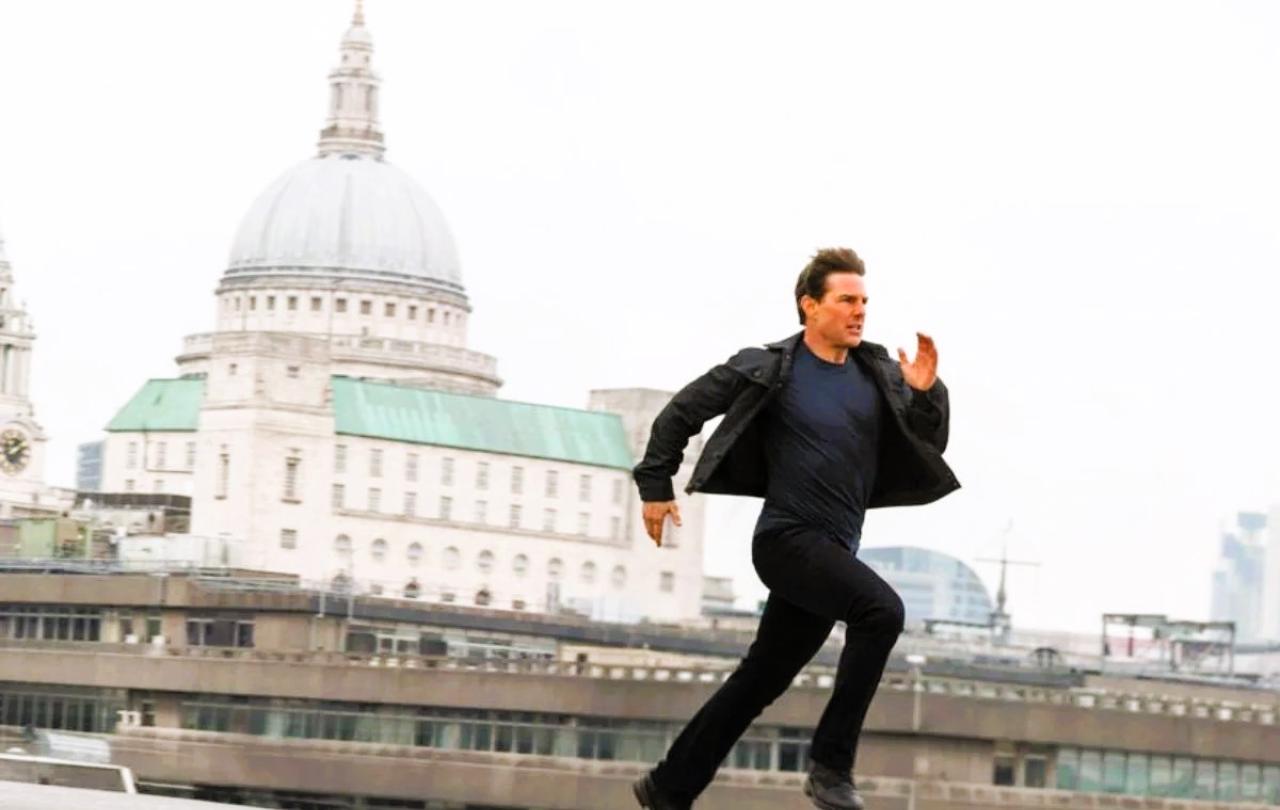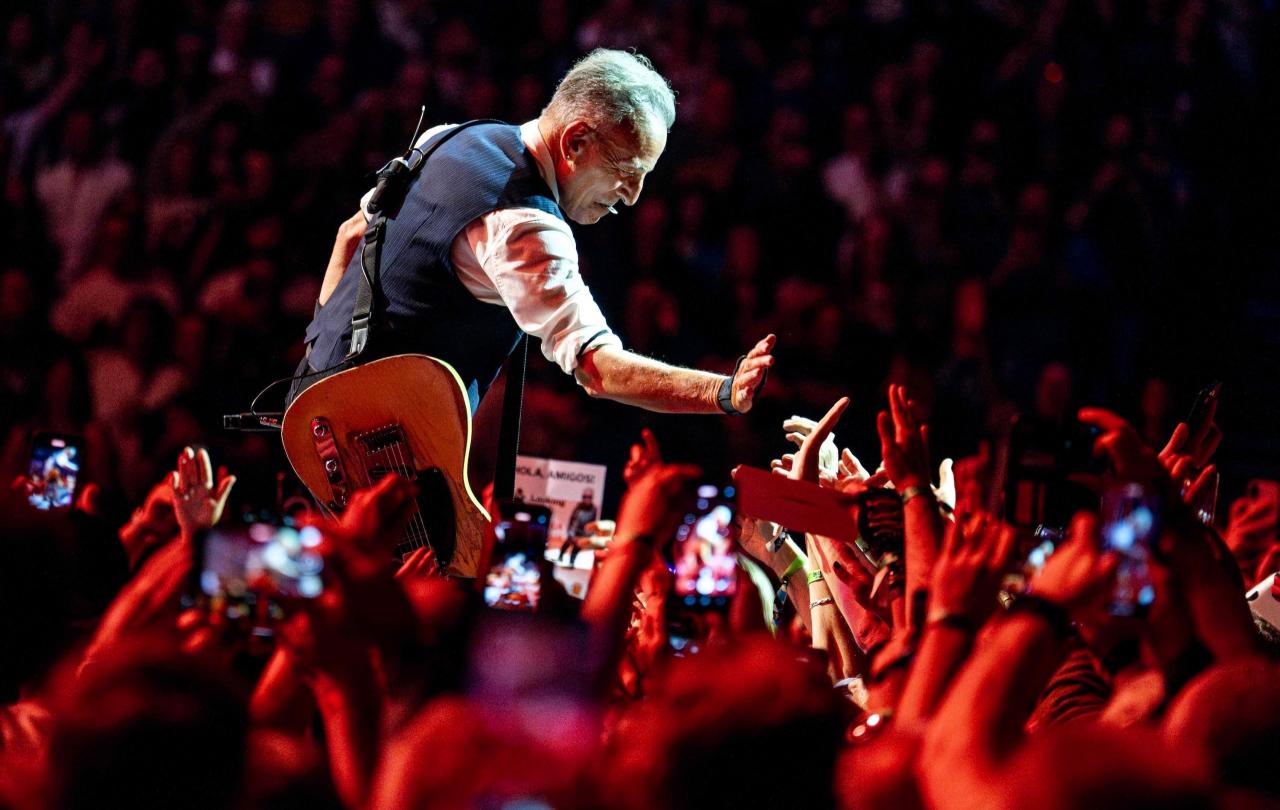
When it comes to action movies, most of us aren’t looking for philosophical musings as much as a dose of adrenaline-fuelled escapist entertainment. Few franchises understand this better than Mission: Impossible, which has consistently delivered on that front—train wrecks, car chases, gun battles, bomb blasts, submarine fights, knife fights, fist fights, dog fights, and, of course, running. Lots of running.
The latest blockbuster in the franchise, Mission: Impossible – The Final Reckoning — which Tom Cruise has suggested may be his last outing as Ethan Hunt — is no exception. But alongside its brilliantly choreographed action scenes, the film also dares to ask some surprisingly existential questions.
Who wants to live forever?
Tom Cruise has achieved legendary status not just for his acting, but for his relentless dedication to performing the most technically demanding stunts in cinema history. Over the years, he’s scaled the Burj Khalifa, clung to the side of a plane during take-off, parachuted from 25,000 feet, flown helicopters through perilous terrain, and held his breath underwater for more than six minutes—without a stunt double in sight.
Now 62, Cruise would be forgiven for taking it easier. Instead, after performing in what one director has called the most ambitious stunt in cinematic history: launching a motorcycle off a cliff, a mid-air dismount, followed by a parachute drop in the previous movie, Cruise has upped the ante again by engaging in an aerial battle atop a biplane flying at 10,000 feet. This involved climbing onto the wing of a moving aircraft travelling at 145 mph enduring hurricane-force winds, while the pilot performed manoeuvres designed to dislodge him.
Cruise has become something of a cultural symbol of immortality. His character, Ethan Hunt, continually evades death, rarely stopping to mourn the losses of others—even those closest to him. But this film feels different. It asks how long someone—real or fictional—can continue to outrun death.
Watching Hunt - and Cruise - cheat death time and again may be entertaining, but it also taps into something deeper. A recent COMRES survey revealed that the top four human fears are all death-related: dying in pain (83 per cent), dying alone (67 per cent), being told they’re dying (62 per cent), and dying in hospital (59 per cent). Final Reckoning doesn't just distract us from these fears—it subtly forces us to confront them. No matter how fast, fit, or famous we are, none of us gets out alive.
What is life really about?
Because the line between Ethan Hunt and Tom Cruise is now so thin, Dead Reckoning plays almost like a eulogy to both. The film opens with a message of thanks from the President of the United States:
“Good evening, Ethan. This is your President. Since you won't reply to anyone else, I thought I'd reach out directly. First, I want to thank you for a lifetime of devoted and unrelenting service… Every risk you've taken, every comrade you've lost, every personal sacrifice you’ve made, has brought this world another sunrise.”
The sentiment feels a little self-indulgent. The camera rarely leaves Cruise, and nearly everything and everyone else feels like a garnish to his character. He gets the best lines, the best cars, the best love interests, the best scenes. At times, Dead Reckoning feels a little like Mamma Mia! — a loose thread of a plot connecting a series of spectacular set-pieces rather than musical numbers.
Still, as the franchise nears its end, it’s bittersweet to say goodbye to a character who’s become part of global popular culture. And it prompts a deeper question: If we can’t look back on our lives and say we gave the world another sunrise, what does make a life well-lived—for those of us who don’t defuse nuclear bombs before breakfast? What have we personally sacrificed for the greater good?
Who Is expendable?
With a body count hovering around 500, the Mission:Impossible series has never shied away from collateral damage. Ethan Hunt has always been portrayed as someone willing to expense the few to save the many.
But The Final Reckoning confronts that idea. It reintroduces William Donloe, a minor character from the original 1996 film, who was the CIA analyst that got reassigned to a remote outpost in the Bering Sea after Hunt famously infiltrated his high-security vault - in that iconic scene where Cruise is suspended from the ceiling, inches above a pressure-sensitive floor, and drops his commando knife, point-first, into the desk. Now, decades later, Hunt seeks him out to apologise.
Surprisingly, Donloe responds with grace. He says the reassignment was the best thing that ever happened to him: it led him to meet the love of his life. Though he had lost everything in a house fire caused by Hunt’s team, he had managed to salvage the commando knife from the original vault heist and gives it back to Hunt as a token of his appreciation.
This could have been a moment of genuine reflection for Hunt—a chance to reckon with the unintended consequences of his actions. Instead, it serves to reinforce the idea that even Hunt’s mistakes are somehow for the best. Hunt is presented as almost messianic—an infallible saviour whose instincts are always right.
But this portrayal contrasts sharply with the biblical Messiah, who taught that no one is expendable. In Jesus’ teaching, every life matters, enemies are to be loved, and compassion is both the means and the end. The ends never justify the means. Love is the mission.
Who Is my neighbour?
One of the deeper themes of the film is the tension between loyalty to those closest to us and responsibility to the wider world. Hunt’s enemies consistently try to exploit his love for friends and family, exposing it as a vulnerability. On a number of occasions, the villains kidnap or threaten someone close to Hunt in order to manipulate him. He is faced with the dilemma - to save the one he loves, or to save everyone else?
At one point, a character offers this reflection:
“We all share the same fate—the same future. The sum of our infinite choices. One such future is built on kindness, trust, and mutual understanding, should we choose to accept it. Driving without question toward a light we cannot see. Not just for those we hold close, but for those we’ll never meet.”
It’s a powerful line—one that challenges narrow tribalism in favour of a universal compassion. In recent years, some have tried to co-opt Christian ethics in support of nationalism, prioritising loyalty to family, faith, and country above all else. But this film’s ethos cuts across that narrative.
In an age of toxic patriotism and growing division, it’s striking that an international superspy like Ethan Hunt seems to offer a profoundly global vision: act not only for those we love, but for the good of the whole world—even at great personal cost.
Hunt’s worldview echoes a deeply biblical theology: every person has worth, and we’re called to love our neighbour—including those who don’t speak our language or share our culture. The franchise promotes a genuine Christian ethic of sacrificial love. And why not? At the heart of Christianity is the story of a God who sent His Son on a seemingly impossible mission to save the world.
It’s hard to miss the moral and theological framework that underpins Final Reckoning. It is, perhaps, this foundation that makes Ethan Hunt’s character not only thrilling but deeply human. Amid the explosions, stunts, and spectacle, Mission: Impossible makes us think, and subtly reminds us that the greatest mission of all might be love.
Support Seen & Unseen
Since Spring 2023, our readers have enjoyed over 1,000 articles. All for free.
This is made possible through the generosity of our amazing community of supporters.
If you enjoy Seen & Unseen, would you consider making a gift towards our work?
Do so by joining Behind The Seen. Alongside other benefits, you’ll receive an extra fortnightly email from me sharing my reading and reflections on the ideas that are shaping our times.
Graham Tomlin
Editor-in-Chief





